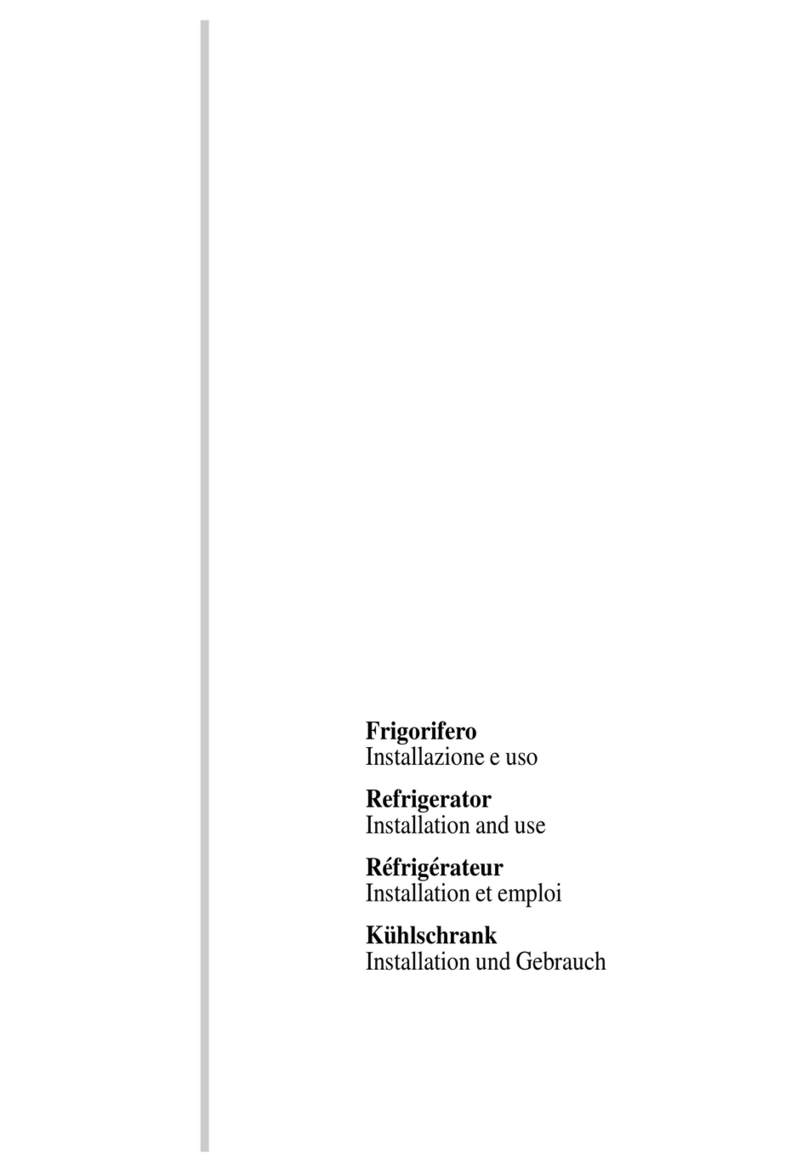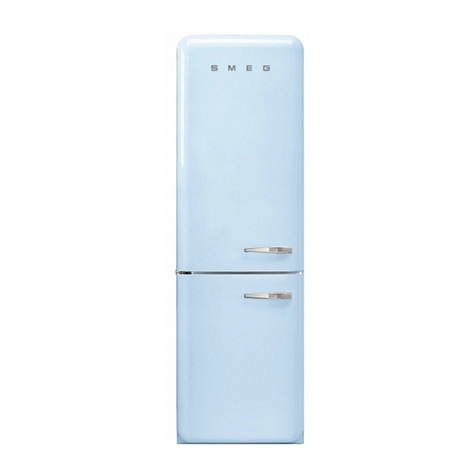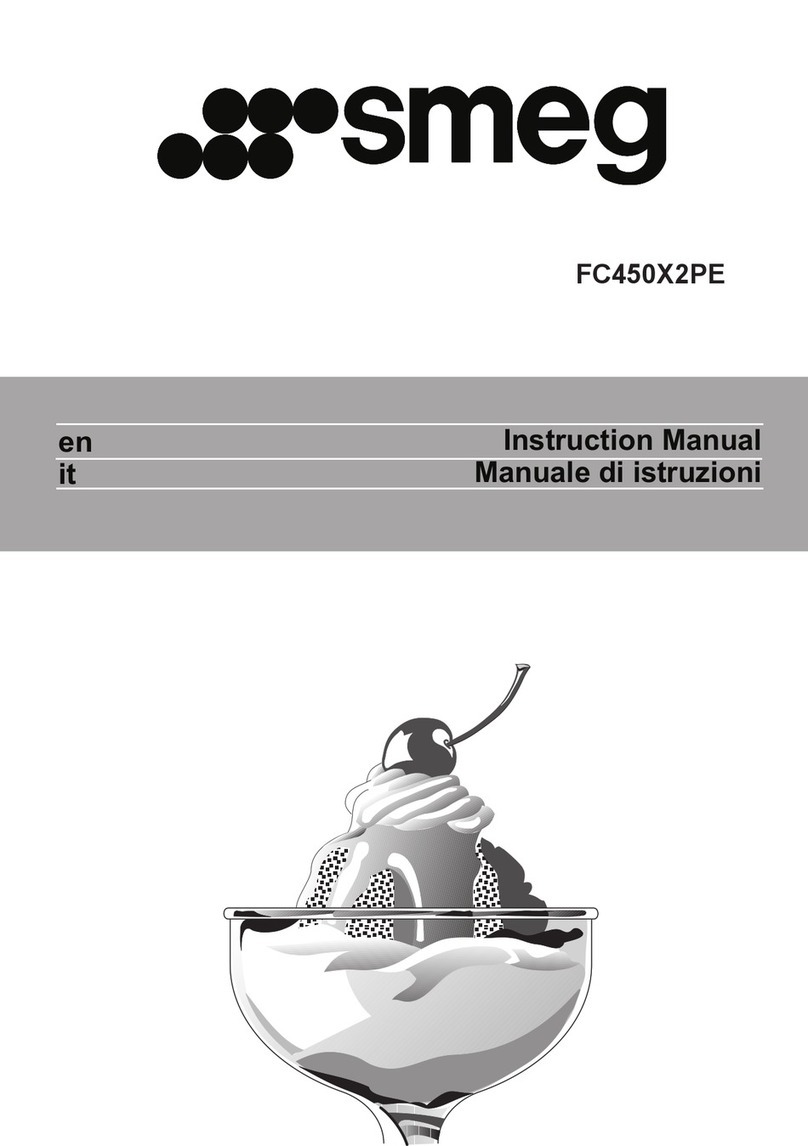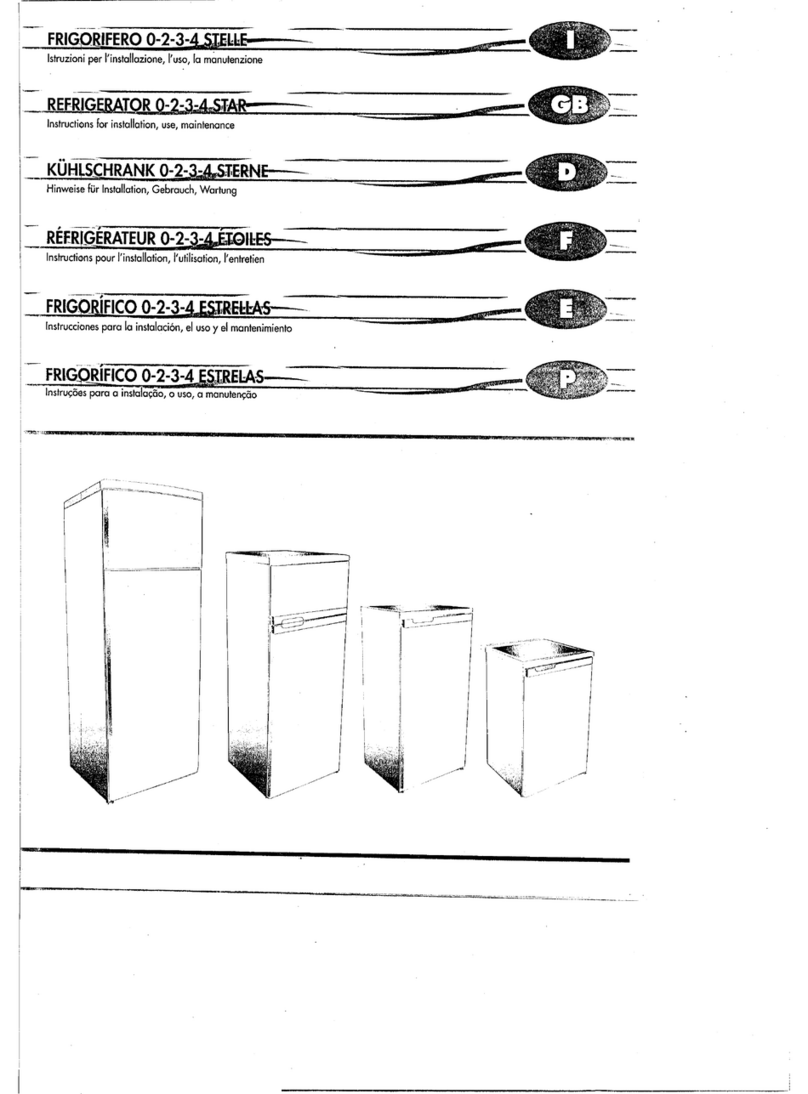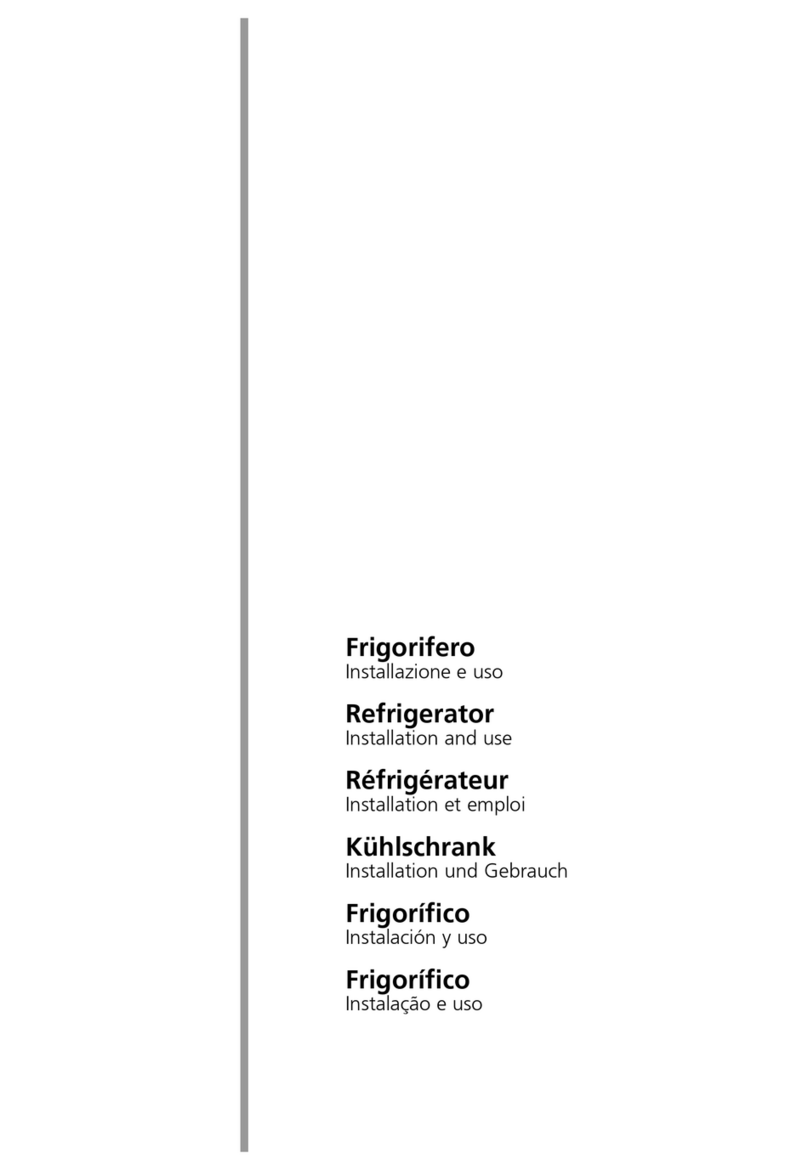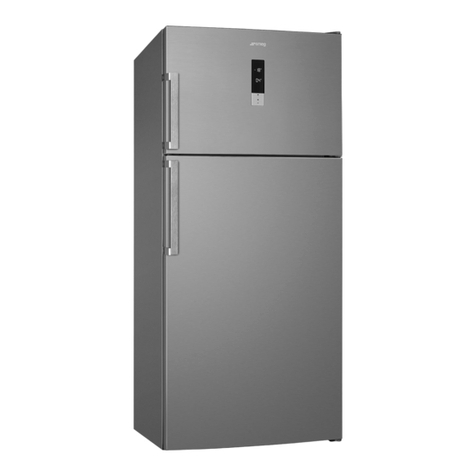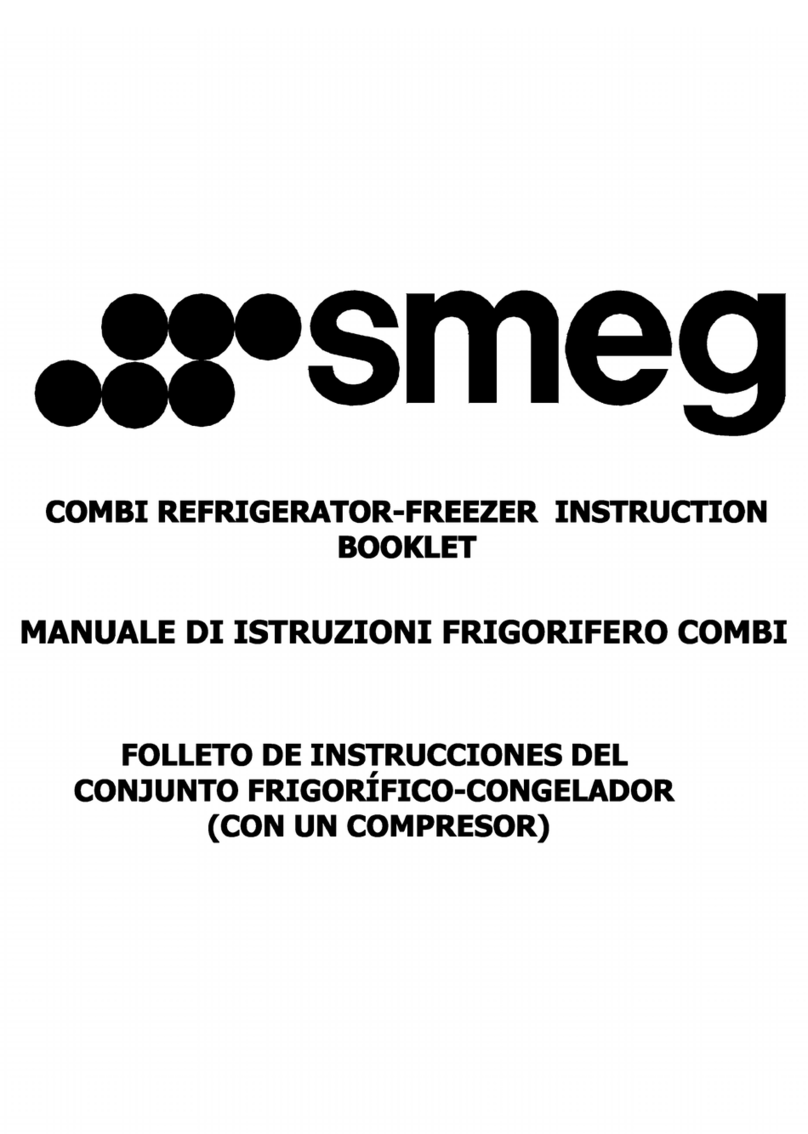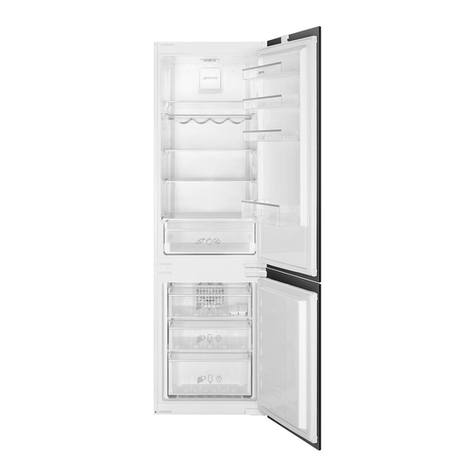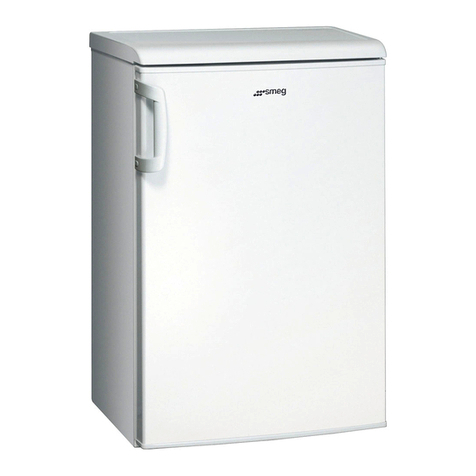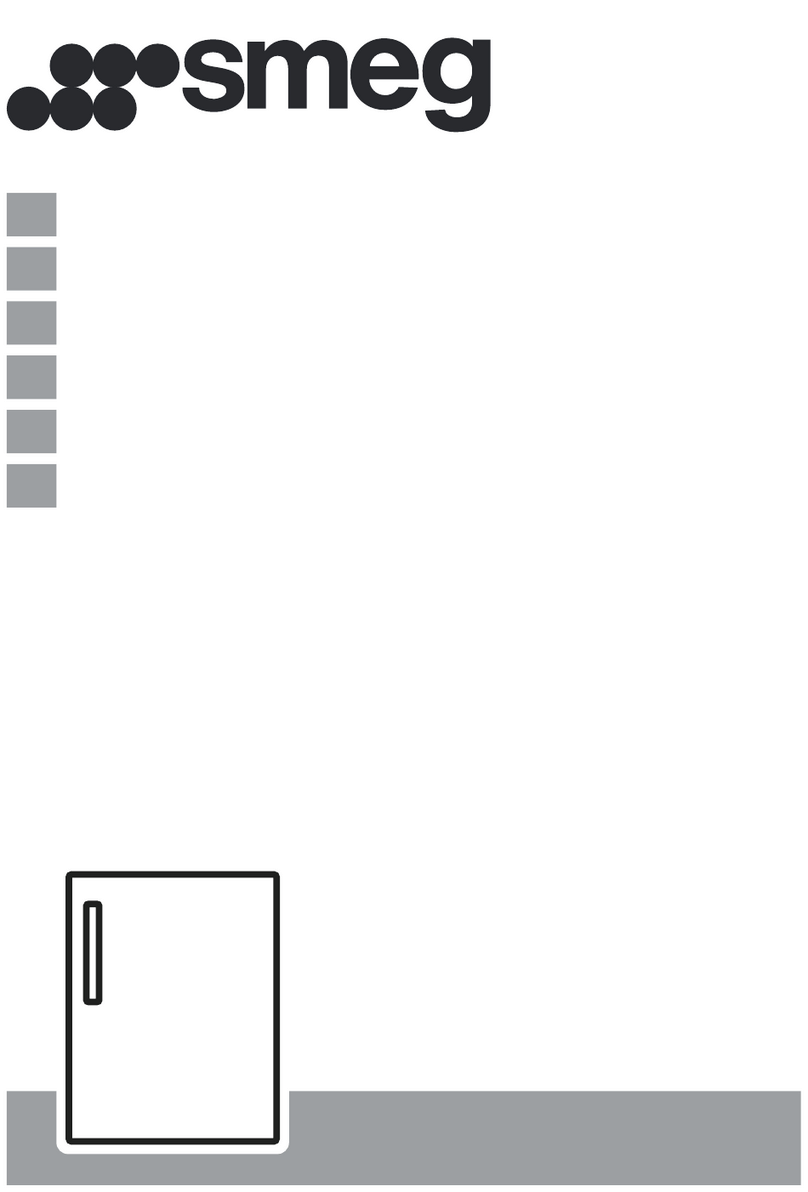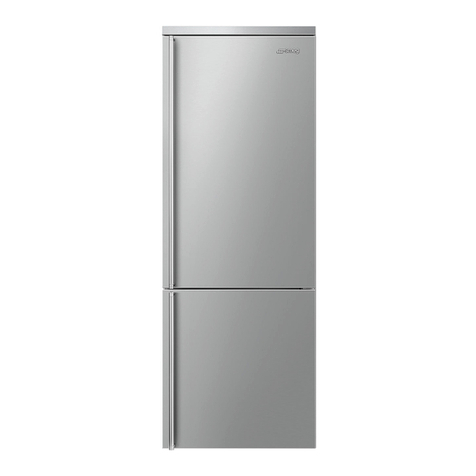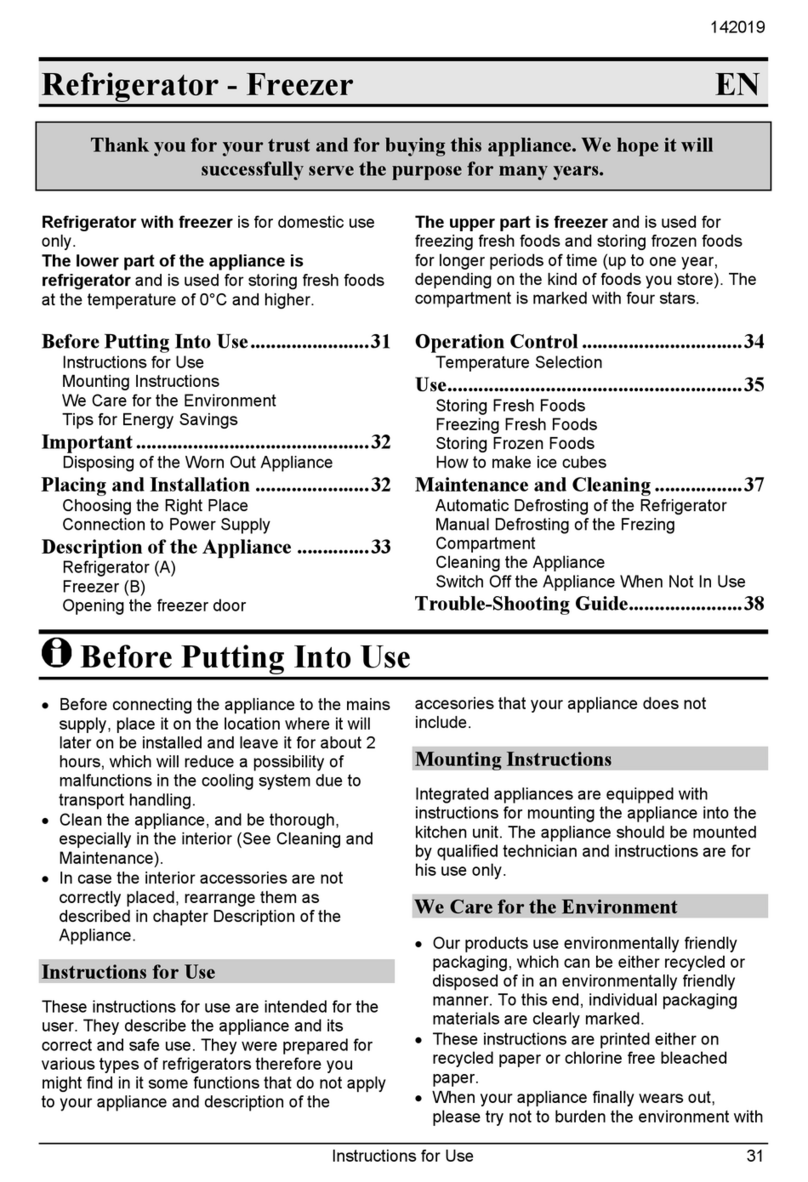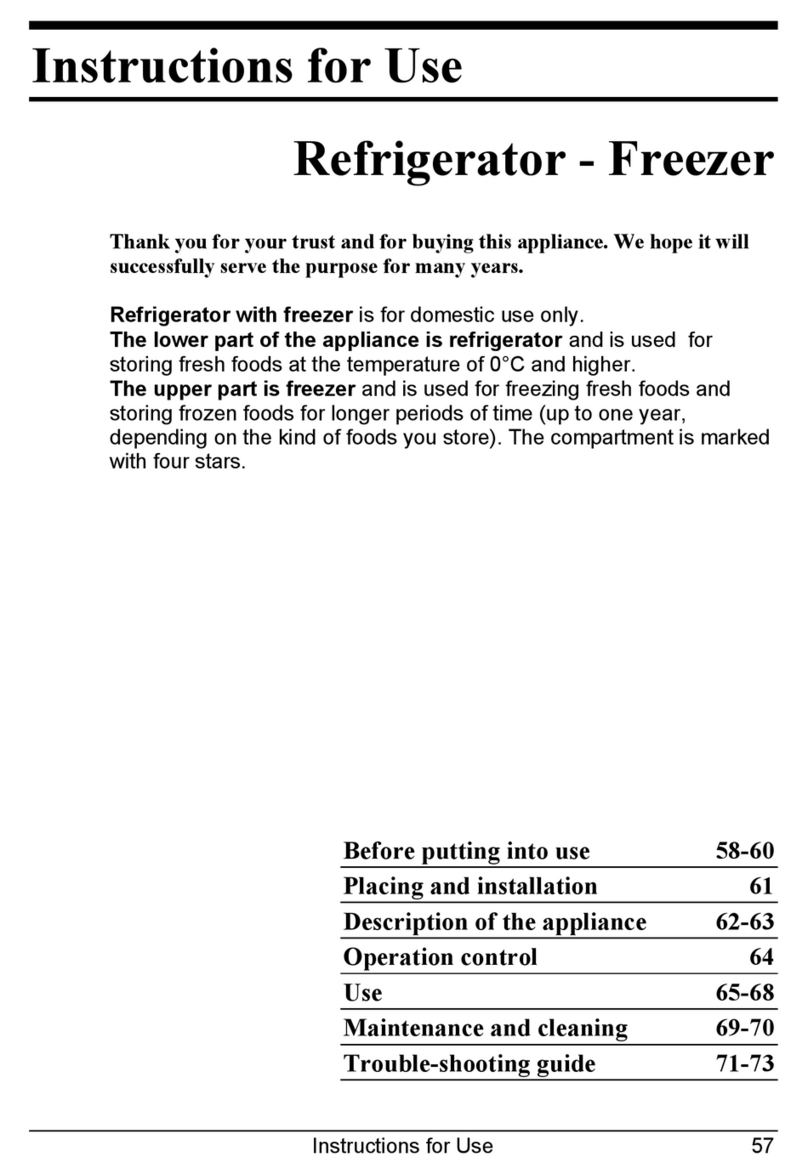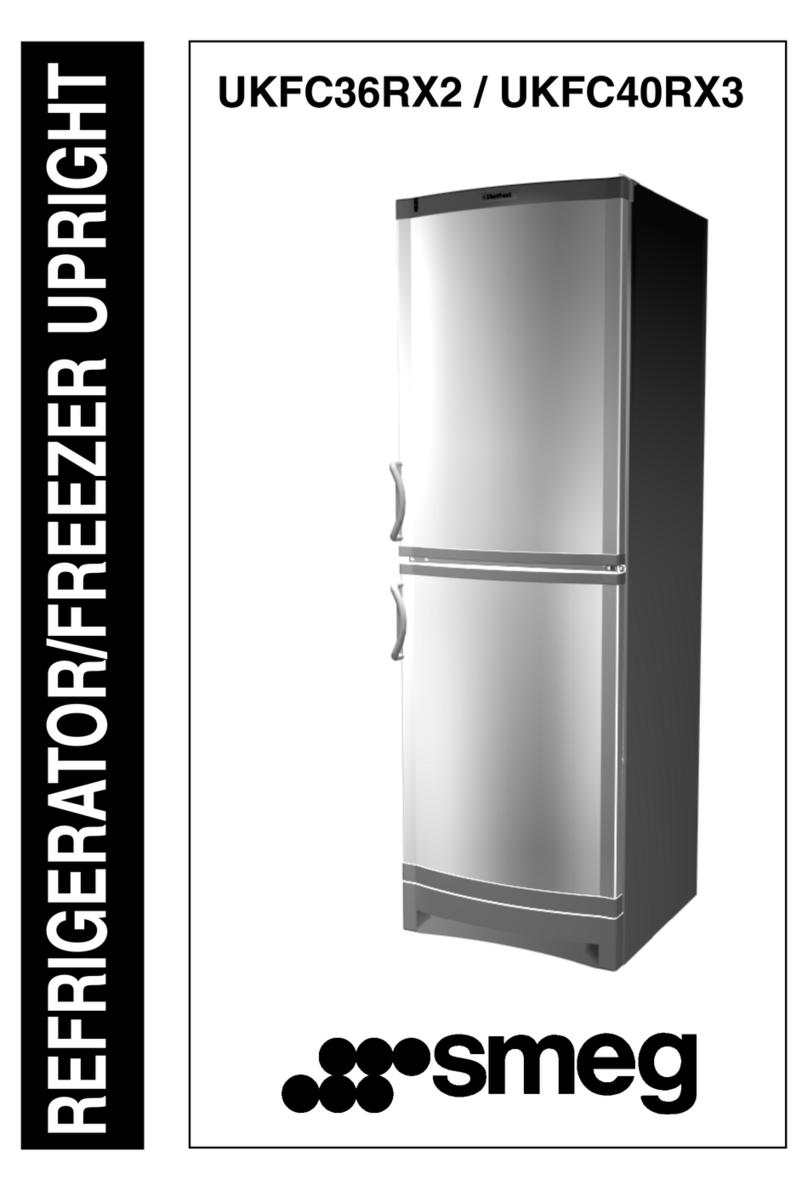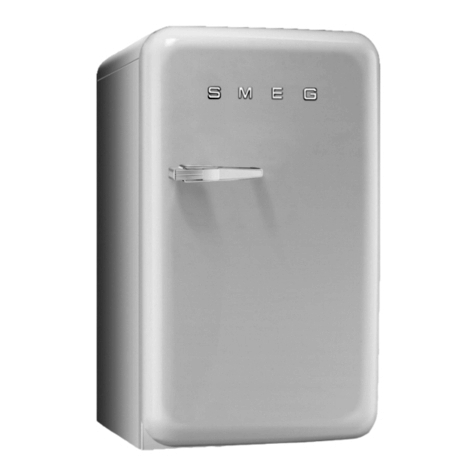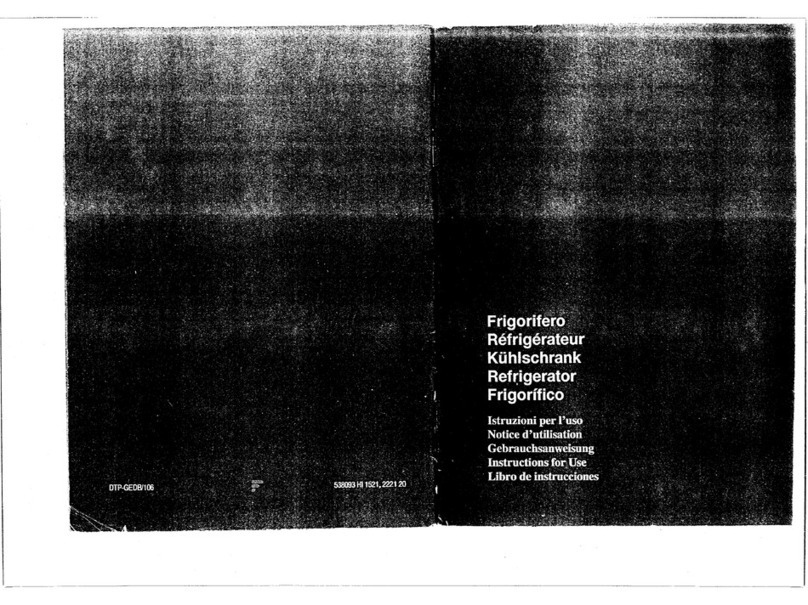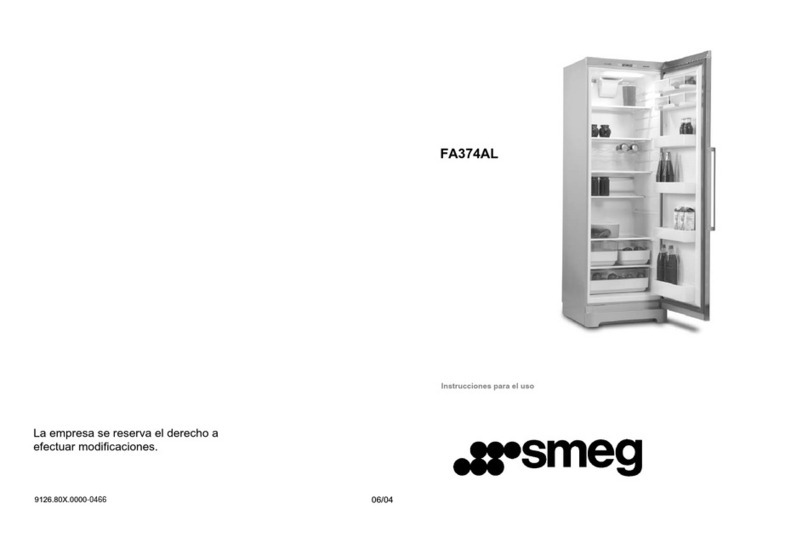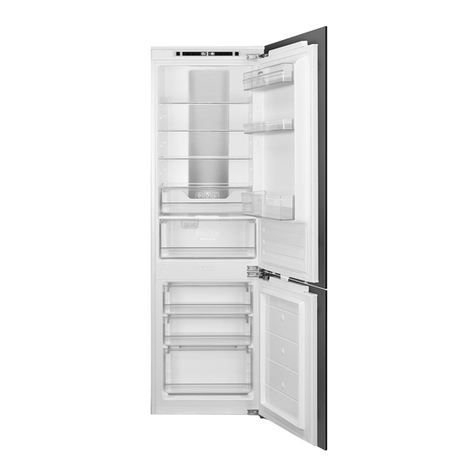134148
Instructions for Use 47
Important
• If you have bought this appliance to replace an
old one equipped with a lock that cannot be
opened from inside (lock, bolt), make sure that
the lock is broken. This will make it impossible
for children to lock themselves inside the
appliance and suffocate.
• The appliance must be correctly connected to
the mains supply. (see: Connecting to the
Mains Supply).
• Do not touch the cooled surfaces while the
appliance operates, especially not with wet
hands, because the skin may stick to the cold
surfaces.
• Do not freeze bottles containing liquid,
especially not soft drinks, such as mineral
water, sparkling wine, beer, cola etc., because
liquid expands during freezing and the glass
bottle is very likely to blow up.
• Do not eat frozen food (bread, fruit,
vegetables), because you can get frostbites.
• If the food has strange smell or color, throw it
away, because it is very likely that it is spoiled
and therefore dangerous to eat.
• Disconnect the appliance from the power
supply before repairing it (only a qualified
technician should repair it), before cleaning and
before replacing the light bulb.
• Do not defrost the appliance with other electric
devices (hair dryer etc.) and never scrape the
ice or frost layer with sharp tools. Use only
enclosed tools or tools recommended by the
manufacturer.
• For the sake of environment protection - be
careful not to damage the rear wall of the
appliance (the condenser unit or the tubes - for
example when moving the appliance) or any
part of the refrigerating system inside the
appliance.
• The refrigerating system of the appliance is
filled with refrigerant and oil, so when the
appliance is damaged, handle it with care and
dispose it of in compliance with environmental
protecting precautions. (See We Care for the
Environment).
• Heating element incorporated in the appliance,
all around the rim, is controlled by the operation
of the compressor and it prevents the door
gasket to freeze on to the freezer housing.
• If the supply cord is damaged, it must be
replaced by the manufacturer or his service
agent or a qualified person in order to avoid
hazard.
• The rating plate is inside the appliance or
outside on the rear wall.
Storing Time During Power Supply
Interruption
Do not open the freezer in case of failure or
power supply interruption! In case the interruption
is extended over longer period of time (16 hours),
take food out of the freezer and use it, or make
sure that is sufficiently cooled (perhaps you have
an extra appliance).
Disposing of the Worn Out
Appliance
• When your appliance finally wears out, dispose
it of. If the appliance has a lock, break it, in
order to prevent eventual accidents (danger of
children get locked inside the appliance).
• The refrigerating system of the appliance is
filled with refrigerant and insulating substances
which should be separately treated and
processed. Call your nearest authorised service
agent or specialised servicing centre. If you
don't find one, contact your local authorities or
your distributor. Be careful not to damage the
tubes on the rear wall of the appliance (danger
of pollution).

